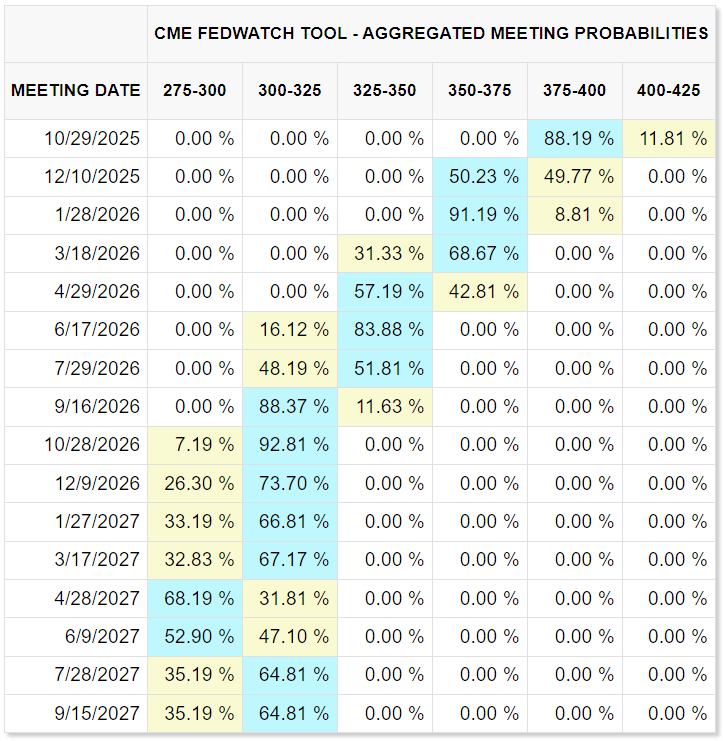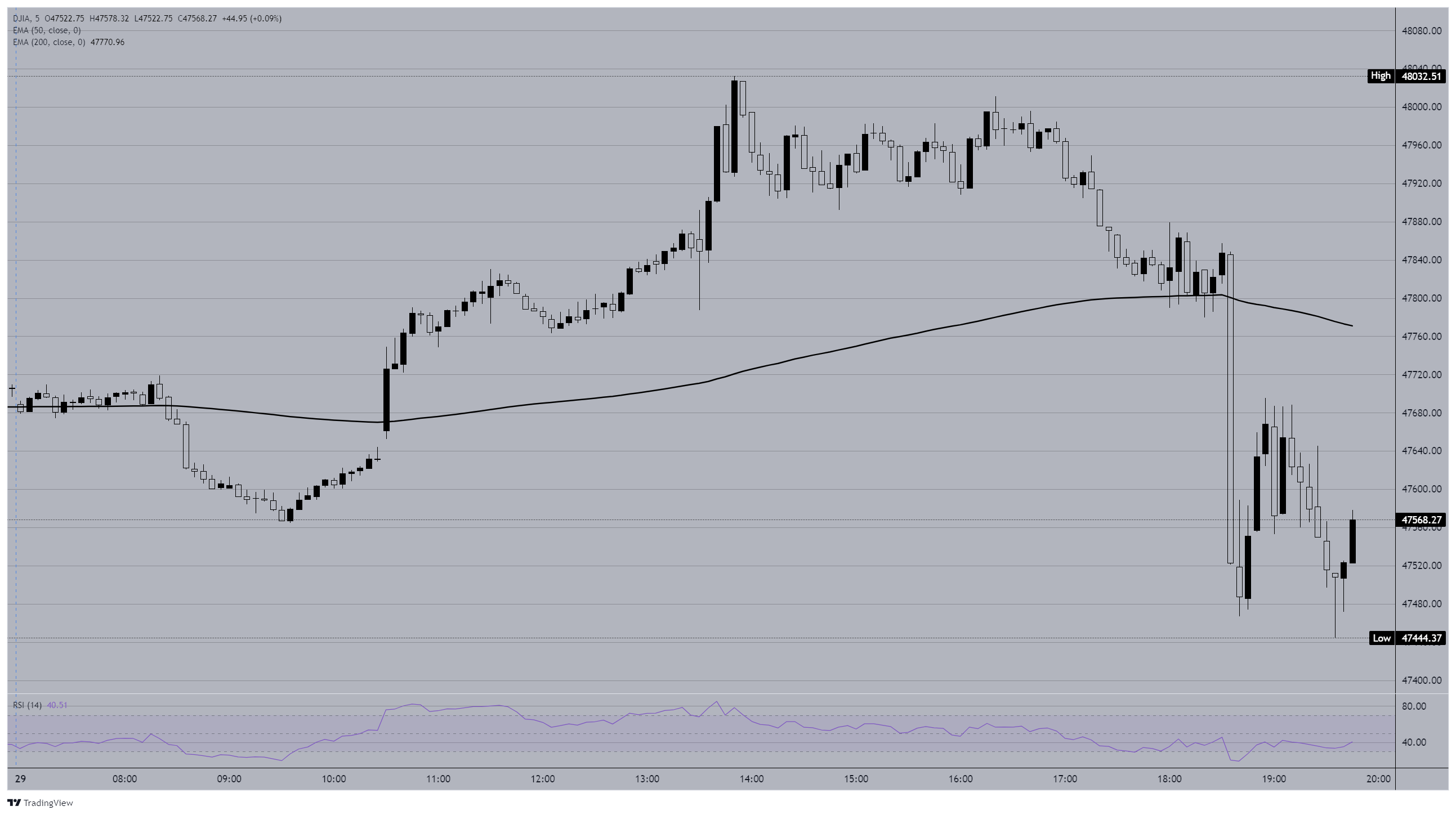Dow Jones Industrial Average retreats after Fed’s Powell reconsiders third rate cut
- The Dow dipped on Wednesday following the Fed’s latest rate cut.
- Fed Chair Powell threw cold water on expectations for a third straight rate trim.
- Citing a lack of official data, Powell leaned into the cautious side.
The Dow Jones Industrial Average (DJIA) shuddered on Wednesday, knocking lower after Federal Reserve (Fed) Chair Jerome Powell warned that the latest Fed interest rate cut may be the last rate move for a little while.
The Fed delivered a follow-up 25 basis point interest rate cut on Wednesday, as markets had broadly expected. The Fed also signaled a further reduction in Quantitative Easing (QE) balance sheet items, which was also expected by markets. The true plot twist came when Fed Chair Jerome Powell, citing a lack of official employment and labor data amid the ongoing US government shutdown, suggested that the Fed may be forced into another open-ended wait-and-see cycle as policymakers struggle to accurately forecast economic outcomes.
Fed Chair Powell dances between inflation and employment concerns
Fed Chair Powell went on to note that there is still some room to move to the upside on inflation thanks to tariff price pressures, though pulled up just short on flashing any meaningful warnings on the labor market, noting that the Federal Open Market Committee (FOMC) doesn’t “see weakness in the job market accelerating.”
Rate market expectations for another interest rate cut in December tumbled from above 90% pre-Fed rate announcement all the way down to 50% post-FOMC press conference, with rate traders now pricing in 91% odds that a third rate trim will come in January, with a cautionary 70% betting ratio on March.

Dow Jones 5-minute chart

Dow Jones FAQs
The Dow Jones Industrial Average, one of the oldest stock market indices in the world, is compiled of the 30 most traded stocks in the US. The index is price-weighted rather than weighted by capitalization. It is calculated by summing the prices of the constituent stocks and dividing them by a factor, currently 0.152. The index was founded by Charles Dow, who also founded the Wall Street Journal. In later years it has been criticized for not being broadly representative enough because it only tracks 30 conglomerates, unlike broader indices such as the S&P 500.
Many different factors drive the Dow Jones Industrial Average (DJIA). The aggregate performance of the component companies revealed in quarterly company earnings reports is the main one. US and global macroeconomic data also contributes as it impacts on investor sentiment. The level of interest rates, set by the Federal Reserve (Fed), also influences the DJIA as it affects the cost of credit, on which many corporations are heavily reliant. Therefore, inflation can be a major driver as well as other metrics which impact the Fed decisions.
Dow Theory is a method for identifying the primary trend of the stock market developed by Charles Dow. A key step is to compare the direction of the Dow Jones Industrial Average (DJIA) and the Dow Jones Transportation Average (DJTA) and only follow trends where both are moving in the same direction. Volume is a confirmatory criteria. The theory uses elements of peak and trough analysis. Dow’s theory posits three trend phases: accumulation, when smart money starts buying or selling; public participation, when the wider public joins in; and distribution, when the smart money exits.
There are a number of ways to trade the DJIA. One is to use ETFs which allow investors to trade the DJIA as a single security, rather than having to buy shares in all 30 constituent companies. A leading example is the SPDR Dow Jones Industrial Average ETF (DIA). DJIA futures contracts enable traders to speculate on the future value of the index and Options provide the right, but not the obligation, to buy or sell the index at a predetermined price in the future. Mutual funds enable investors to buy a share of a diversified portfolio of DJIA stocks thus providing exposure to the overall index.

